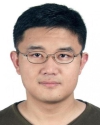- Home >> Latest News
Prof. Jian Cheng's Lecture: On Quantifying Local Geometric Structures of White Matter
 Title: On Quantifying Local Geometric Structures of White Matter
Title: On Quantifying Local Geometric Structures of White Matter
Speaker: Dr. Jian Cheng, Beihang University
Chair: Prof. Tianzi Jiang, Brainnetome Center, CASIA
Time: 9:30-10:30, May 14, 2018
Venue: The 1st meeting room, 3rd floor, Intelligence Building
[Abstract]
In diffusion MRI, scalar indices (e.g., fractional anisotropy, mean diffusivity, orientation dispersion) have been widely used in voxel-based analysis, tract-based analysis, tract-based spatial statistics (TBSS). However, these intra-voxel indices cannot represent inter-voxel local geometric structures of white matter. The spatial geometric structure of white matter fiber tracts is known to be very complex in human brain. In a local spatial region, typical geometric structures of fiber tracts include splay (aka diverge, converge, or fanning), bend, twist, etc. In last 20 years, people qualitatively talked about complex local fiber configuration (splay, bend and twist), however, there is no existing work to quantitatively describe these local geometric structures. In this talk, we will introduce our recent work, called director field analysis with 6 scalar indices, to quantify local white matter geometric structure (orientational dispersion, splay, bend and twist). The proposed method works for both voxel data (i.e.., tensor images, or ODF images) and fiber tracts. These proposed indices have potential in voxel-based analysis and tract-based analysis for group studies.
[Biography]
Jian Cheng is currently an associate professor at Beijing Advanced Innovation Center for Big Data-Based Precision Medicine, the School of Computer Science and Engineering, Beihang University (BUAA), China. He received a bachelor degree in electrical engineering and computer science from Harbin Institute of Technology (HIT) in 2005, and a Ph.D. degree in medical image analysis jointly from Institute of Automation, Chinese Academy of Sciences (CASIA) and INRIA Sophia Antipolis in 2012. Before joining BUAA, he worked at University of North Carolina at Chapel Hill (2012-2014), National Institutes of Health (2014-2017), and University of Sydney (2017-2018). His current research mainly focuses on the methodologies in diffusion MRI and anatomical MRI. He is interested in machine learning, computer vision, signal and image processing, applied mathematics, and software engineering. He has published about 30 papers on top journals and conferences in medical image analysis, e.g., IEEE trans on Medical Imaging, Medical Image Analysis, NeuroImage, Human Brain Mapping, MICCAI, IPMI, and CVPR. He received the best reviewer award in MICCAI 2015.
